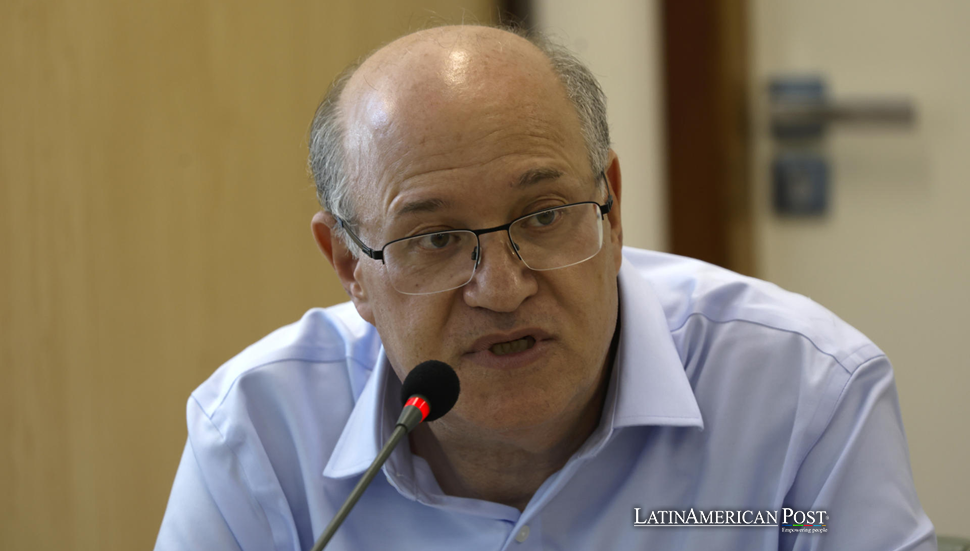Crime is Latin America’s Economic Drain

Crime and violence in Latin America and the Caribbean take an enormous toll on the economy, costing the region nearly as much as it spends on education, according to a recent IDB report. With criminal activity absorbing almost 3.5% of the region’s economic output, policymakers face pressing challenges to redirect resources toward education, health, and growth.
Crime’s Massive Impact on G.D.P.
Crime and violence weigh heavily on Latin America and the Caribbean’s economy, draining resources that could support schools, healthcare, and other critical services. An Inter-American Development Bank (IDB)report estimates that nearly 3.5% of the region’s G.D.P. is consumed by crime-related expenses. That’s a staggering figure, close to what the region spends on education and twice the amount allocated to social assistance programs.
IDB President Ilan Goldfajn states, “Crime limits growth, drives inequality, and diverts private and public investment” [source: Reuters]. The report emphasizes that addressing crime isn’t just about reducing crime rates—it’s about fostering a more robust economic environment where people can thrive. Without significant changes, this economic strain continues to crowd out opportunities for growth and social investment, creating a hard-to-break cycle.
Human Capital at Risk and Loss of Potential
Crime’s toll exceeds immediate financial costs, significantly impacting the region’s human capital. The IDB estimates that 22% of the total crime cost comes from lost potential—people who are unable to contribute productively because of injury, death, or criminal activity. When crime disrupts education or employment, those affected by future earnings and social contributions are lost, which amounts to millions of dollars in lost potential.
Alongside this loss, businesses in the region spend heavily on crime mitigation; half (47%) of the total cost of crime goes to private security measures. Crime prevention and criminal justice public expenditures are another 31%. These costs are very expensive to the area and affect how companies invest in development and the creation of jobs.
The International Monetary Fund (I.M.F.) points out how high-end organized crime and drug dealing weigh on companies and communities. “The presence of gangs and drug trafficking amplifies the costs of doing business,” the I.M.F. report explains. It adds that “the damage costs of crime are four times higher for firms that report gangs operating in their vicinity.”
Latin America vs. Europe’s Crime Spending
The IDB’s report compares crime costs in Latin America with those in several European countries. If Latin America could reduce its crime costs to levels similar to those of Poland, Ireland, and the Netherlands, the savings would amount to nearly 1% of G.D.P. This discrepancy highlights significant differences in crime prevention effectiveness across the region. On average, European countries spend 42% less on managing the economic impact of crime than Latin American countries, allowing them to allocate development resources.
The I.M.F. report states that crime rates do not necessarily decrease with increased spending. Although criminal justice consumes a significant portion of almost every Latin American government’s budget, inefficiencies mean that this funding doesn’t effectively address crime. The I.M.F. notes, “Inevitably, the more money spent on security operations at home to combat crime, the more other factors may be equally important in L.A.C. countries.” Thus, even when high financial resources are dedicated to justice, adequate punishment is needed to yield meaningful results in the region’s justice systems.
Without efforts to make spending more effective, the economic impact of crime will likely continue, limiting the resources available for essential services and meaningful improvements in the quality of life for people across the region.
Policy Changes for a Safer Region
As the IDB and I.M.F. reports point out, there is not only one solution to the cost of crime in Latin America. I.M.F.’s recommendations, for example, are that a “regional knowledge platform” would allow Latin American nations to pool data, experience, and best practices, thereby making criminal prevention and economic policy more coordinated.
According to the IDB’s findings, crime must be reduced at its origins: poverty and opportunity. Politicians can combat social inequalities fueling crime by channeling money into education, jobs, and social services. This is how you reduce crime and build strong communities from scratch.
The I.M.F. also emphasizes that the investment must be spent on prevention rather than reactive interventions such as security and police. ‘It must be taken care of to accumulate resources that address the economic and social conditions that deter crime, rather than the security forces alone,’ reads the report.
For Latin America and the Caribbean, lower crime costs won’t be about making things safer; it will be about making things greener and more sustainable in the long term. If criminality was dealt with in the context of human capital, private capital, and public investment, regional states could reap enormous potential for development and social progress. The IDB and I.M.F. reports point to the need to stop thinking only about the short-term consequences of crime and instead consider the long-term benefits of a more excellent vision of security, justice, and social justice.
Also read: Mexico’s Industrial Parks Boom As Nearshoring Surges
The road is rocky, but the rewards are enormous. Suppose Latin American nations shift money away from crime-related costs and invest in people instead. In that case, they can build a solid foundation for future generations, ensuring a safer, more equal future.




